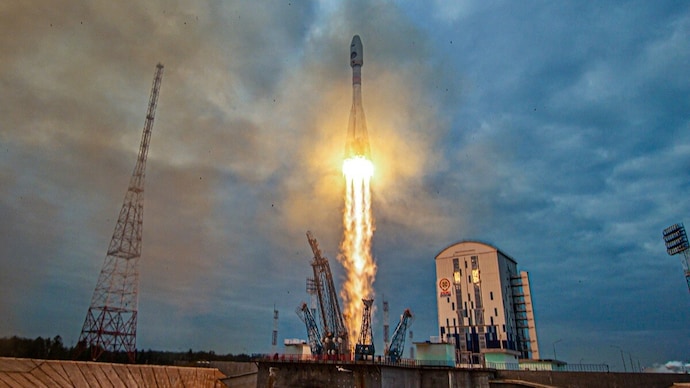
Russia launches Luna-25 to Moon: Why it's a big deal for Moscow
The spacecraft lifted off from the Vostochny Cosmodrome in Amur Oblast and is expected to reach lunar orbit by August 16 and make a landing on the Moon's surface on August 21-22.

In Short
- Its a strategic move amidst geopolitical tensions
- The spacecraft lifted off from the Vostochny Cosmodrome
- Primary objective of Luna-25 is to collect samples of moon rock and dust
In the midst of an ongoing war with Ukraine, economic challenges, and sanctions from the West, Russia has made a bold move in the field of space exploration.
The Russian space agency, Roscomos, launched the Luna-25 lander aboard a Soyuz 2.1b rocket that blasted off from the launch pad at the Vostochny Cosmodrome on Friday. The country successfully launched its first lunar lander in 47 years, marking a significant milestone in its space program.
The Luna-25 mission is not just a testament to Russia's technological prowess but also a strategic move amidst geopolitical tensions.
PICTURE-PERFECT LAUNCH
The spacecraft lifted off from the Vostochny Cosmodrome in Amur Oblast and is expected to reach lunar orbit by August 16 and make a landing on the Moon's surface on August 21-22.
The primary objective of Luna-25 is to collect samples of moon rock and dust. These samples are crucial for understanding the lunar environment before any potential base construction.
PROJECTING POWER
This mission is particularly significant as it comes at a time when Russia is facing severe economic challenges and international sanctions due to its ongoing war with Ukraine.
Despite these hurdles, Russia's space program remains undeterred.
The Luna-25 mission is being projected as a symbol of national power and resilience against the West's sanctions, many of which have targeted Moscow's aerospace sector. While Russia and the US have been at loggerheads over the Ukraine war, they have continued their cooperation when it comes to running the International Space Station.
The launch also signifies Russia's growing independence in space exploration after its ties with the West were severed following the invasion of Ukraine in February 2022.
THE BIGGER PICTURE
The Luna-25 mission is part of a broader race to explore the lunar south pole, a region believed to hold coveted pockets of water ice. Major powers such as the United States, China, India, Japan, and the European Union have all been probing the moon in recent years.
However, no country has yet made a soft landing on the south pole. If successful, Luna-25 could potentially make Russia the first nation to achieve this feat.
The spacecraft, roughly the size of a small car, will operate for a year on the moon's south pole. Scientists have detected traces of water ice in the region's shadowed craters, making it a prime location for future lunar bases.
The discovery of water ice could be historic as it could be used to extract fuel and oxygen, as well as provide drinking water for future lunar inhabitants.
The mission's success could potentially reshape the landscape of lunar exploration in the coming years, placing Russia at the forefront of this new space race.


